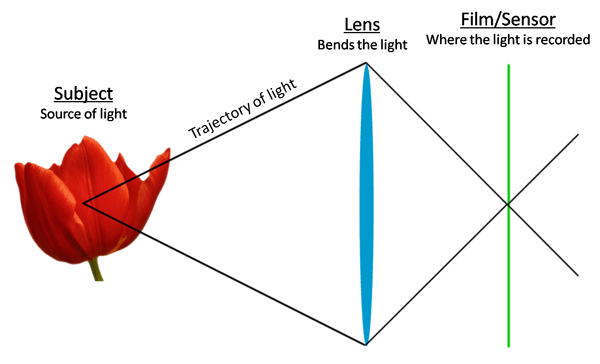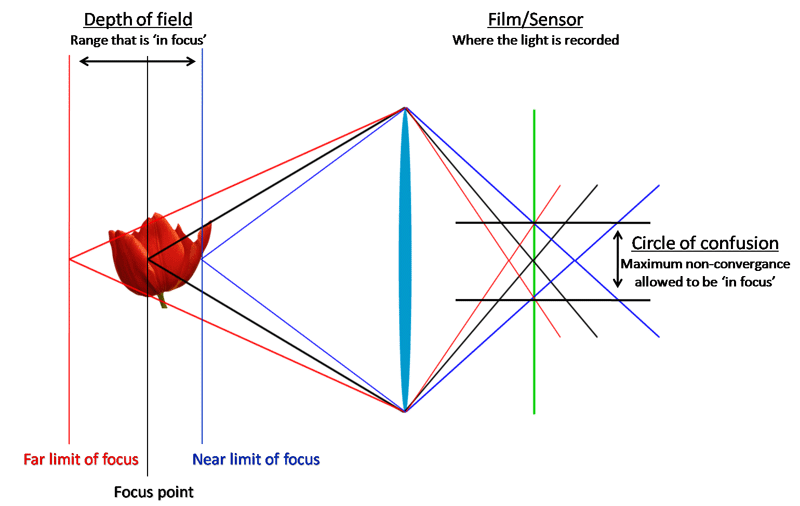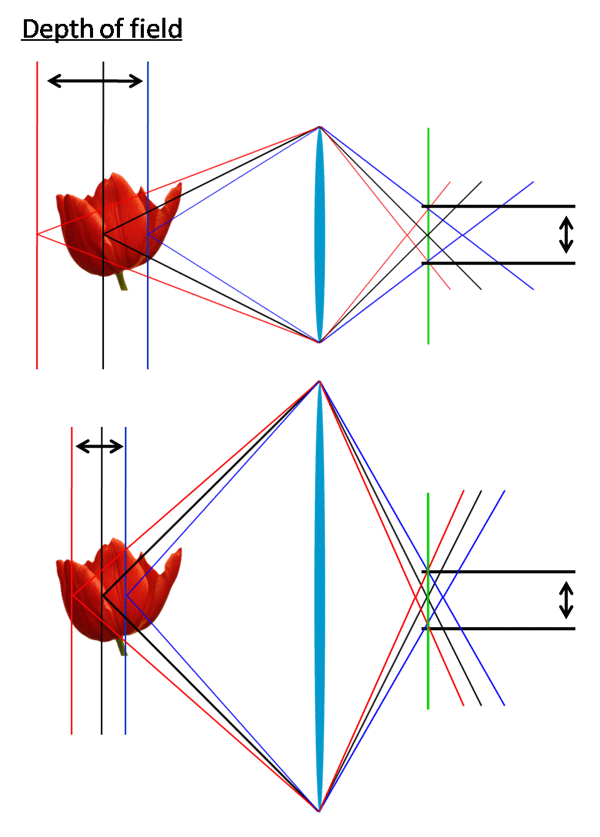Whenever you take a photograph, you need to "focus" the camera. That's the difference between a good picture with correct focus and a ruined picture with incorrect focus. 
Camera's basic elements - the lens and the sensor. The lens works to bend the light that it receives and project it onto the sensor,
The Sensor measures the light. The light from the subject will re-converge at the same location on the sensor, and our picture is sharp and "in focus".
If the lens/sensor/subject are oriented in a way so that the light doesn't converge, however, we get a picture that isn't in focus.
The amount of "out of focus" blur is determined by how far off the trajectory is from converging. Here you can see that the image will be very badly misfocused, since the top red trajectory and bottom red trajectory don't come close to converging. 
The image trajectories don't have to perfectly converge. There is a tolerable range known as the "circle of confusion". As long as the trajectories still converge within this range, the image will still be sharp enough to be considered "in focus", even if it isn't perfect.
An interesting image attribute of photography and optical systems is that there is only ever one distance that is actually in perfect focus.
Notice here that at one point in the picture is perfectly sharp and "in focus", as we'd expect. This is our focus distance. However, as we get further and further away from that point - farther away towards the word "Depth", or closer towards the word "Field", the images gets increasingly blurrier.
Based on how much the rays of light fail to converge, the image gets blurrier and blurrier. There is only a certain range of distances which are actually "in focus". This range is called the "depth of field".
How depth of field can effect a picture. Chose the focus distance to focus on the main subject in the center, and have another object with less distance. Take photo and observe.

 ශිල්ප 64
ශිල්ප 64